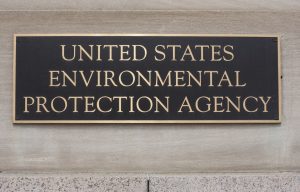Feeling wired about risks arising from the Telephone Consumer Protection Act? Maybe you should. The TCPA subjects businesses that use text messaging, auto-dialing, and bulk faxing for advertising and marketing to potential class action litigation. Financial institutions, various supermarket chains, and recently Caribou Coffee have all been targeted in TCPA class actions. But policyholders who get static over such claims are not without recourse: several lines of liability insurance may answer the call.
Articles Posted in General Liability
What Did You Expect? How Contractors Can Help Ensure Insurance Coverage Under a CGL Policy
Insurance covers the unexpected. Courts sometimes struggle to assess what an insured did expect, didn’t expect, or sometimes, should have expected. Contractors, construction firms and others should bear this in mind in their daily operations and when seeking a defense from their insurance companies.
In Auto-Owners Insurance Co. v. Ryan Stevens Construction, Inc. the U.S. District Court for the District of Utah recently held that a contractor’s commercial general liability insurance carrier had no  duty to defend a contractor who should have expected property damage resulting from its use of certain equipment on a construction project. The decision cautions contractors around the country to consider the expected consequences of their on-site actions to avoid arguments from insurers that any resulting damages are not accidental.
duty to defend a contractor who should have expected property damage resulting from its use of certain equipment on a construction project. The decision cautions contractors around the country to consider the expected consequences of their on-site actions to avoid arguments from insurers that any resulting damages are not accidental.
A Payment or Just a Loan? When Your Insurer Asks for Defense Costs Back
Many policyholders assume that if an insurer pays to defend a claim against them, the policyholder will never be asked to pay those costs back. And most often they’re right. But sometimes the insurer may demand that the policyholder pay back some or all of the defense costs. Such insurers treat the contractual duty to defend or to indemnify the insured for defense costs as little more than a lending facility.
 Most of the time, such insurer demands are unjustified. But companies should understand when and under what circumstances insurers might seek reimbursement or recoupment of defense costs so they can avoid agreeing to do so unnecessarily or at least plan in advance financially.
Most of the time, such insurer demands are unjustified. But companies should understand when and under what circumstances insurers might seek reimbursement or recoupment of defense costs so they can avoid agreeing to do so unnecessarily or at least plan in advance financially.
Death of Orion—OIC’s Amending Scheme Leaves the Insurer “Mostly” Dead
In The Odyssey, Homer describes Orion as a giant hunter armed with bronze club. As the legend goes, Orion was killed—either by the sting of a great scorpion or by the bow of Artemis—and was placed among the stars, creating the well-known constellation.
 Orion Insurance Company is now set to join its mythic namesake as an artifact of history, though without the long-lasting twinkle. Barring one important, if remote, opt-out scenario, Orion and its sister company, the London and Overseas Insurance Company Limited (collectively OIC), are expected to dim and fade away over the next few years.
Orion Insurance Company is now set to join its mythic namesake as an artifact of history, though without the long-lasting twinkle. Barring one important, if remote, opt-out scenario, Orion and its sister company, the London and Overseas Insurance Company Limited (collectively OIC), are expected to dim and fade away over the next few years.
A “Suit” by Any Other Name: Ninth Circuit Rules CERCLA 104(e) Letter Triggers Duty to Defend
Recently, we wrote about the breadth of the “duty to defend,” and its importance to policyholders. As if on cue, late last week the Ninth Circuit Court of Appeals confirmed in Ash Grove Cement Company v. Liberty Mutual Insurance Company that, under Oregon law, an insurer’s duty to defend begins with an information request from the Environmental Protection Agency, and continues for the duration of the regulatory process.  The particular information request at issue in Ash Grove Cement is known as a “104(e) letter,” which is issued by the EPA under section 104(e) of the Comprehensive Environmental Response, Compensation and Liability Act of 1980 (CERCLA). As companies that have owned or operated a contaminated site know from experience, a 104(e) letter or a similar request under state environmental law typically is the first step in a regulatory enforcement process under which they face strict and retroactive liability for the costs of investigating and cleaning up the site. The ruling in Ash Grove Cement means that defense cost coverage begins at this critical juncture and continues until site investigation and cleanup is completed.
The particular information request at issue in Ash Grove Cement is known as a “104(e) letter,” which is issued by the EPA under section 104(e) of the Comprehensive Environmental Response, Compensation and Liability Act of 1980 (CERCLA). As companies that have owned or operated a contaminated site know from experience, a 104(e) letter or a similar request under state environmental law typically is the first step in a regulatory enforcement process under which they face strict and retroactive liability for the costs of investigating and cleaning up the site. The ruling in Ash Grove Cement means that defense cost coverage begins at this critical juncture and continues until site investigation and cleanup is completed.
New York High Court Gives the Bronx Cheer to Insurers’ Pro Rata Allocation and Exhaustion Arguments
Over time, New York’s courts have erected multiple barriers to policyholders seeking to recover insurance for long-tail, progressive injury claims—such as environmental or asbestos liabilities—that can implicate multiple policies over multiple policy terms. Now, in a New York minute, just weeks after hearing oral argument, the Empire State’s highest court leveled the playing field by endorsing the “all sums” and “vertical exhaustion” approach to allocation advocated by a policyholder, at least as to policies containing “non-cumulation” and “prior insurance” provisions.

In In re Viking Pump, Inc., New York’s Court of Appeals did not overrule its 2002 decision in Consolidated Edison Co. of New York v. Allstate Ins. Co., which had applied pro rata allocation where the non-cumulation clause argument was not raised, but the court made clear that pro rata allocation is not the default rule in New York. Rather, the specific wording of the triggered policies will control, and can require allocation on an all-sums basis. This is a huge win for policyholders with New York liabilities and a further endorsement, by a prestigious court, of the “all sums” approach to allocation.
Are You a “You”? Don’t Ignore CGL Policies’ Separation of Insureds Clause
What a difference a word makes! Today’s words are “the,” “an,” “any,” and especially “you.”
Most Commercial General Liability policies include a coverage enhancement known as a “separation of insureds” or “severability of interests” clause. This clause states that the policy’s coverage is to apply “separately” to each insured against whom a claim is made. When reviewing coverage for a CGL claim in which more than one insured is involved, it’s vital to consider the separation of insureds provision. This clause is too frequently overlooked. Continue Reading ›
Obtaining Insurance Coverage for Climate Change Investigations
New York’s Martin Act has a lot of Wall Street and energy industry companies concerned about potential investigations into their respective stances on climate change. In the client alert “When Attorneys General Attack,” colleagues Sheila Harvey, Joseph Jean, Carolina Fornos and Benjamin Tievsky examine the act and discuss strategies for managing and obtaining insurance coverage if such investigations do occur.
To Defend Or Not To Defend? There Shouldn’t Be Any Question
Sometimes a phrase is repeated so often that we forget what it meant in the first place. Perhaps that is the case with the phrase “the duty to defend is broader than the duty indemnify.” This statement has been made by courts frequently and repeatedly over at least the past 50 years in virtually every case in which an insurer has sought to avoid defending its policyholder against a lawsuit or other third-party liability. Yet insurers continue to confuse the scope of their duty to defend with the scope of their duty to indemnify. The basic distinction is this—an insurer owes a duty to defend when its policyholder faces allegations that could potentially result in liability covered by the policy; an insurer owes a duty to indemnify when a policyholder’s actual liability falls within the coverage provided by the policy.

Insurer Stuck with Unfavorable Interpretation of Ambiguous Policy
In Fabozzi v. Lexington Insurance Company, the United States Court of Appeals for the Second Circuit has reaffirmed that ambiguities in an insurance policy must be construed against the insurer. Continue Reading ›
 Policyholder Pulse
Policyholder Pulse



